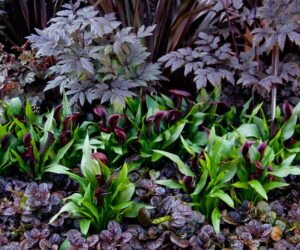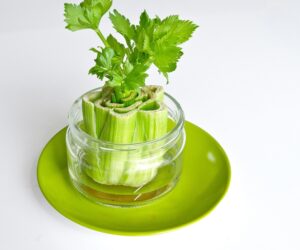Raspberries are one of the most popular fruits among amateur gardeners. But they are not only popular because of the taste; if you follow our Step-by-Step How to Grow Raspberries Guide, you’ll find that they are also very easy to grow and care for. You don’t have to do much. They will probably spread over the whole garden if you leave them.
Raspberries can grow in gardens or containers. There are two types of raspberry plants. Summer fruiting raspberries produce fruits between June and August, and autumn fruiting raspberries will fruit between August and October.
Summer fruiting varieties are usually floricane raspberries. They will be bearing fruits after one year. Most Autumn fruiting varieties are primocanes. They will already produce fruit in their first year of growth. Primocanes are also great for container growing.
Check out these great tips and learn how to grow raspberries.
1. Location and best planting time

Raspberries can tolerate part shade but will thrive best when planted in a sheltered position with much sun. In the full sun, you will get many more fruits. The best time for planting raspberries is the whole period between October and March if the soil is not frozen.
2. Planting

Raspberries can be planted in rows or containers. Every row should be about 6 feet apart. Put each plant around 20 inches apart. If possible, it is highly recommended to grow your raspberries from north to south so that they won’t shade each other.
3. Soil

The best soil for raspberries is the one that retains moisture. They will thrive better in fertile soil that is slightly acidic and well-drained but avoid shallow chalky ones. The best way is to dig a hole before planting and mix well-rotted organic matter into the soil. The best pH for raspberry growing is between 6.0 and 6.5.
4. Watering

Via www.youtube.com
After you plant your raspberries, they need to be watered thoroughly. Keep them well-watered during the whole growing season and also when there is a dry period.
5. Pruning

Prune your Raspberries regularly once per year. You will have healthier crops. Because of the thorns, use gardening gloves for protection. Leave a few stubs as possible, and be sure to cut all the old, damaged, or diseased canes at the base. You can also remove some of the canes during summer if you notice that they are too overcrowded.
6. Fertilizers

You can add fertilizer before planting. For best result, feed with liquid general-purpose fertilizer every month during the raspberry growing season. It is even better if you use well-rotted organic matter. If the growth is weak, add sulfate of ammonia. Never fertilize in the fall.
7. Taking care of the plants

Via www.hgtv.com
Keep removing weeds regularly. Raspberries produce a lot of ‘suckers’ along with their root system. Those can come up relatively far from the main plant. Dug them up and pulled them out. When the plants begin fruiting, it’s advisable to cover them with netting to protect your crop by keeping birds away.
8. Harvesting

Via www.hgtv.com
When the raspberries come off the plant easily they are ready for harvesting. They don’t last long once harvested. The best way to store them is to freeze them. You can use trays. When they freeze, you can move them into bags. After harvesting, cut back the canes to a ground level.
9. Containers

Via www.monrovia.com
Growing raspberries in containers are especially recommended if you want to avoid their overgrowth. The size should be around 24 inches in diameter. It is better if you use soil-based compost for planting. Make sure that the compost won’t dry out. After three years, you should plant them in the ground.
10. Training

Via www.hgtv.com
You can choose a wire fence for your raspberries. Select the strongest young canes, around seven per plant. Tie them about three inches apart along with the wire supports. You can also keep fruiting canes on one side and new ones on the other side of the wire. Then could the old canes be pruned way easier after harvesting.



